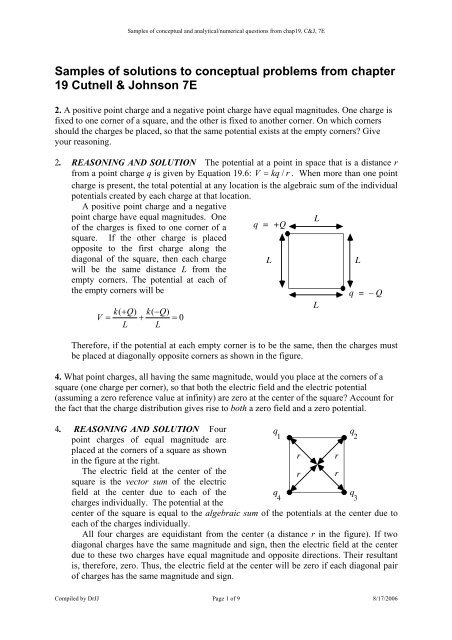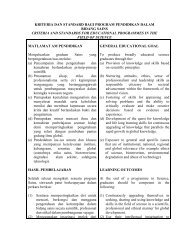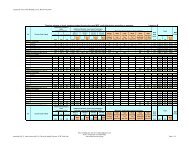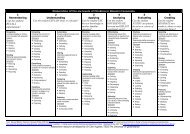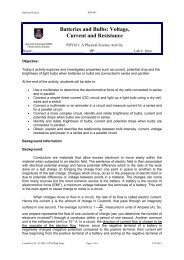Basic Physics II Evidences - DrJJ - UiTM
Basic Physics II Evidences - DrJJ - UiTM
Basic Physics II Evidences - DrJJ - UiTM
You also want an ePaper? Increase the reach of your titles
YUMPU automatically turns print PDFs into web optimized ePapers that Google loves.
Samples of conceptual and analytical/numerical questions from chap19, C&J, 7ESamples of solutions to conceptual problems from chapter19 Cutnell & Johnson 7E2. A positive point charge and a negative point charge have equal magnitudes. One charge isfixed to one corner of a square, and the other is fixed to another corner. On which cornersshould the charges be placed, so that the same potential exists at the empty corners? Giveyour reasoning.2. REASONING AND SOLUTION The potential at a point in space that is a distance rfrom a point charge q is given by Equation 19.6: V = kq/ r. When more than one pointcharge is present, the total potential at any location is the algebraic sum of the individualpotentials created by each charge at that location.A positive point charge and a negativepoint charge have equal magnitudes. Oneof the charges is fixed to one corner of asquare. If the other charge is placedopposite to the first charge along theq = +QLdiagonal of the square, then each charge LLwill be the same distance L from theempty corners. The potential at each ofthe empty corners will beq = – QLk( + Q) k( −Q)V = + = 0L LTherefore, if the potential at each empty corner is to be the same, then the charges mustbe placed at diagonally opposite corners as shown in the figure.4. What point charges, all having the same magnitude, would you place at the corners of asquare (one charge per corner), so that both the electric field and the electric potential(assuming a zero reference value at infinity) are zero at the center of the square? Account forthe fact that the charge distribution gives rise to both a zero field and a zero potential.4. REASONING AND SOLUTION Fourpoint charges of equal magnitude areplaced at the corners of a square as shownin the figure at the right.The electric field at the center of thesquare is the vector sum of the electricfield at the center due to each of thecharges individually. The potential at theq q12center of the square is equal to the algebraic sum of the potentials at the center due toeach of the charges individually.All four charges are equidistant from the center (a distance r in the figure). If twodiagonal charges have the same magnitude and sign, then the electric field at the centerdue to these two charges have equal magnitude and opposite directions. Their resultantis, therefore, zero. Thus, the electric field at the center will be zero if each diagonal pairof charges has the same magnitude and sign.q 4rrrrq 3Compiled by <strong>DrJJ</strong> Page 1 of 9 8/17/2006


